We studied the traffic of 3,000 websites to better understand the size and make-up of AI traffic—including how much of it is being sent, the most common referral sources, and how that differs depending on the size of the site.
We analyzed the traffic differences between sites driving greater than 10,000 visitors, between 1,000 and 9,999 visitors, and below 999 visitors per month, across the following seven AI chatbots: ChatGPT, Claude, Copilot, Gemini, Perplexity, Jasper, and Mistral.
Here are our top findings:
- 63% of sites receive AI traffic overall
- 98% of AI traffic is sent by three chatbots
- ChatGPT is the biggest referrer, accounting for 50% of AI traffic
- 0.17% of the average website’s traffic comes from AI chatbots
- The smallest websites get the greatest % of total traffic from AI
Thanks to our data scientist Xibeijia Guan for aggregating all of the data behind this study.
But, I’d also recommend reading the following posts:
Analyze your own AI traffic with Ahrefs Web Analytics
It’s clear that if you want traffic from AI, you need to focus your attention on the “big three” chatbots driving 98% of AI traffic: ChatGPT, Perplexity, and Gemini.
ChatGPT, in particular, should be your main focus, since it drives half of all AI referrals.
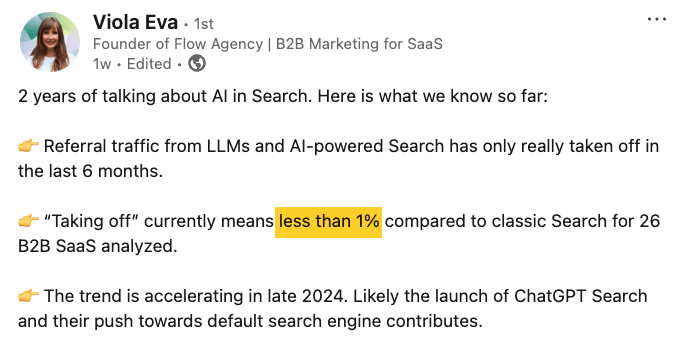

A post from Flow Agency Founder, Viola Eva, showing that less than 1% of traffic came from AI, based on her study of 26 B2B SaaS sites.
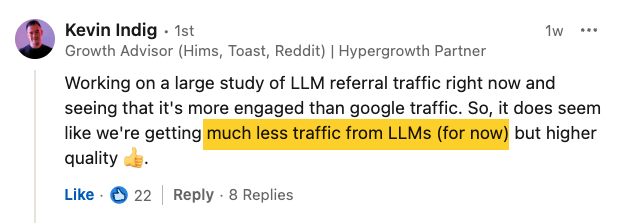

A comment from Kevin Indig on Viola Eva’s post, revealing he is also seeing minimal amounts of traffic from AI/LLMs right now.
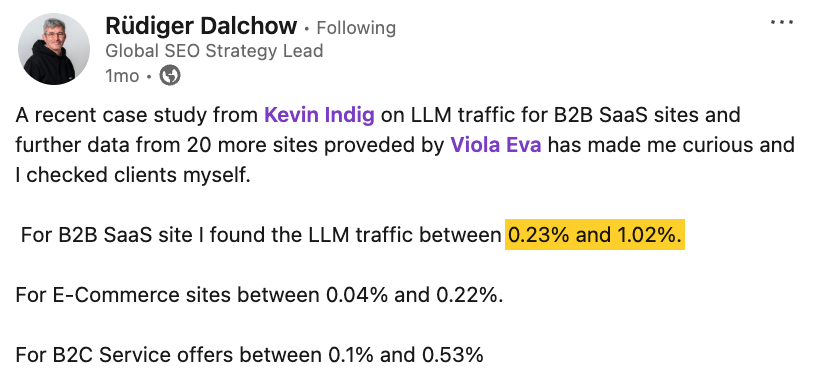

Rüdiger Dalchow found that B2B SaaS sites were receiving 0.2% and 1.02% of their traffic from AI.


Olaf Kopp saw that AI traffic share stood at just 0.57% of total sessions
Your analytics may show similar or even higher AI traffic numbers.
Across all three cohorts, we noticed the top sites picking up roughly 6% of their total traffic from AI, with one site earning as much as 18%.
While ~0.17% might seem negligible, true figures are likely north of this, since AI visits can get bundled in with “direct” traffic.
With these kinds of reporting quirks, finding other ways to attribute your AI traffic and conversions is a must.
One avenue you can go down is setting up qualitative tracking methods like “How did you hear about us?” forms, to catch what analytics might miss.
For example, we collect qualitative feedback on registration, and to date we’ve seen 14K+ self-attributed new users from ChatGPT.


Ahrefs registration feedback data, shared by Tim Soulo, proving AI visits can lead to conversions
Now that we’ve analyzed average AI traffic across our entire sample, let’s dig deeper into individual cohorts.

Patrick also points out that this might not be a strategic move by Copilot, but rather a mistake.
“Sometimes it’s a mistake. There was a time when the Google app on mobile stripped the referrer, for example.”
I did the same check on Mistral and Jasper, and found that their AI referral traffic also pulls through as “direct”.
The implication of this is AI traffic is likely being vastly underestimated.
And if AI traffic is being underestimated, you can be sure AI conversions are too—particularly since converting users don’t always click through from AI.
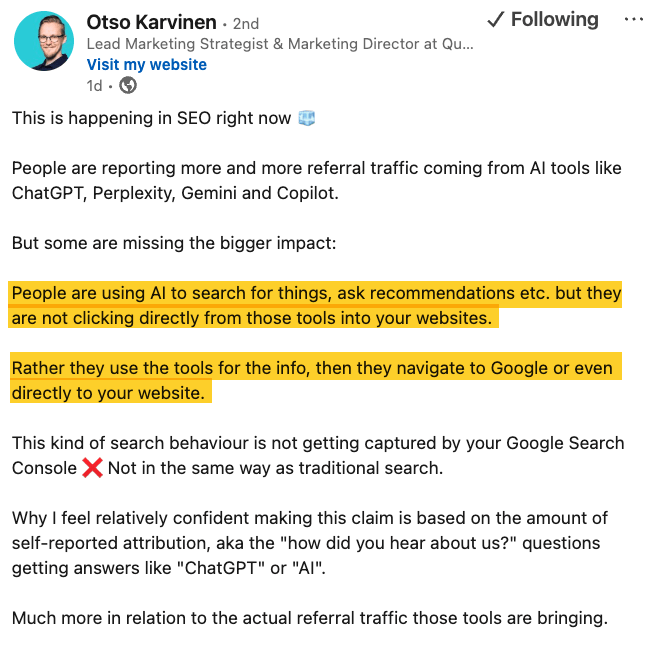

Otso Karvinen asserts that AI users don’t always click directly from AI tools through to websites, and that visits may happen at a later date.
AI tools really come into their own when driving brand awareness. While it’s still possible to convert users from AI, that doesn’t always happen in one neatly packaged conversion journey.
Knowing the limitations in tracking AI traffic and conversions is crucial if you’re setting campaign expectations or reporting results to clients and stakeholders.
Final thoughts
You can use the data in this study to benchmark your own AI traffic and manage expectations.
While you shouldn’t expect tons of AI visits right now, your AI traffic is likely to be greater than your analytics is able to show.
With that in mind, keep an eye on your “direct” traffic. If platforms like Copilot are holding back referrer information, interesting things might be hiding in there.
For instance, pay attention to direct traffic spikes for individual pages—this might just be a sign that untraceable AI sources are referencing that content.
We’ve learnt that larger sites get more traffic from AI—but if your site is small, your AI referrals are going to account for a larger share of your total traffic.
Find and optimize your most-cited content, create more of it, then focus on incremental gains from ChatGPT.
If you found this study interesting, check back on the blog for more AI traffic research.
Similar Posts
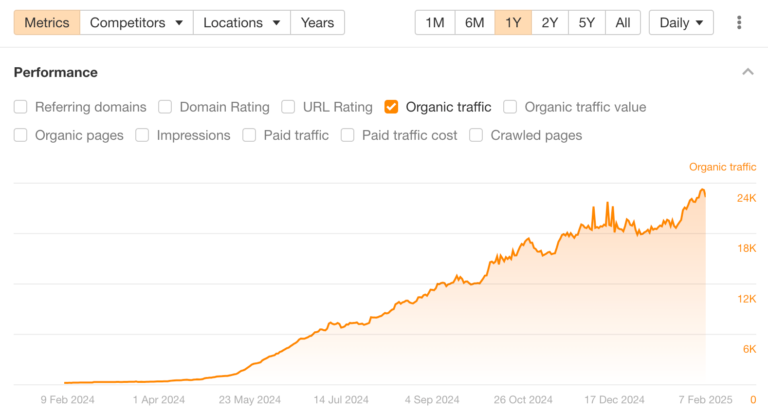
Top 50 Trending SaaS Startups (Q1 2025)
We analyzed the organic traffic growth of over 10000 websites to discover the hottest trending saas startups. At the top of our list, you’ll find Oneshot AI, Litespace, Complyt, Mastt, and The Liven. To find the top trending startups in 2025 we calculated the percentage growth of their organic traffic to their websites between January 1,…
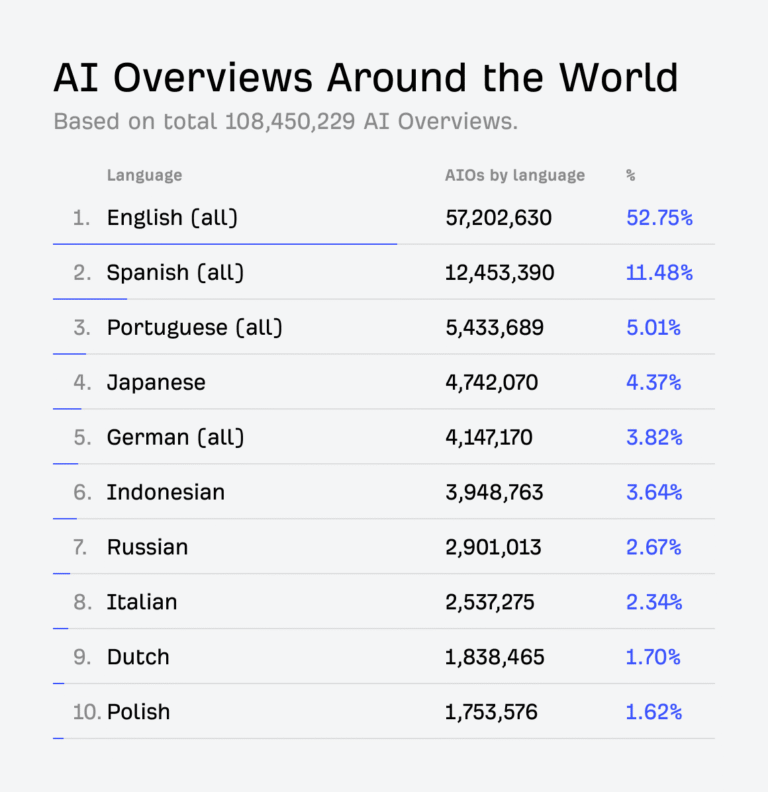
Which Countries Have the Most AI Overviews? 108 Million Queries Analyzed
Get the week’s best marketing content We analyzed our Brand Radar database of 108 million AI Overview queries to see which countries have the most AI Overviews present in Google search results. These are the top 50 countries with the biggest proportion of AI Overviews worldwide. language coverage for AI Mode as well, so these…
Understanding the Difference Between Cache Keys and Cache Tags in Drupal
I recently got this this question via the feedback form on the bottom of the Cache API Overview tutorial: “What is the difference between cache keys and cache tags? Why do I need a tag for node:5 when I can just invalidate it using a partial key like [‘node’, 5]?” After digging into the topic…
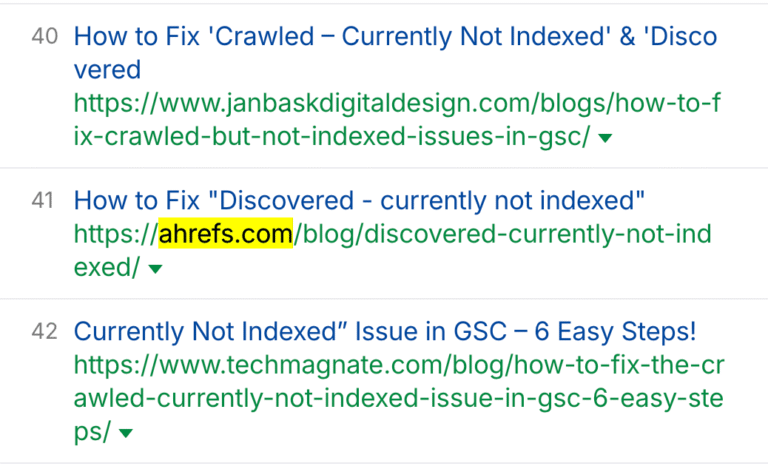
Google Thinks AI Mode Is Good for Users, but the Content Isn’t Good Enough to Rank in Google
I set up some tests over a month ago to see if Google would rank content generated by Google AI Mode in the organic search results. Spoiler: it did not rank. Google believes AI Mode content is good enough to show to users in what will likely be the default search mode in the future. But…
Meet the New Drupalize.Me AI Assistant
An experimental new way to explore our Drupal tutorials – powered by AI, guided by humans. We’ve been experimenting with different ways to use AI to make Drupalize.Me even more helpful for our members, and we’re excited about this first update: a new AI-powered chatbot that can search and summarize tutorials from our library. We’re…

Tools and Tips to Successfully Organize Your Small Business
Tools and Tips to Successfully Organize Your Small Business Running a small business involves juggling multiple tasks, from managing finances to handling customer relationships. Staying organised is essential for efficiency, productivity, and growth. Below is a detailed guide to essential tools and actionable tips to help streamline your operations effectively. Essential Tools to Organize Your…
